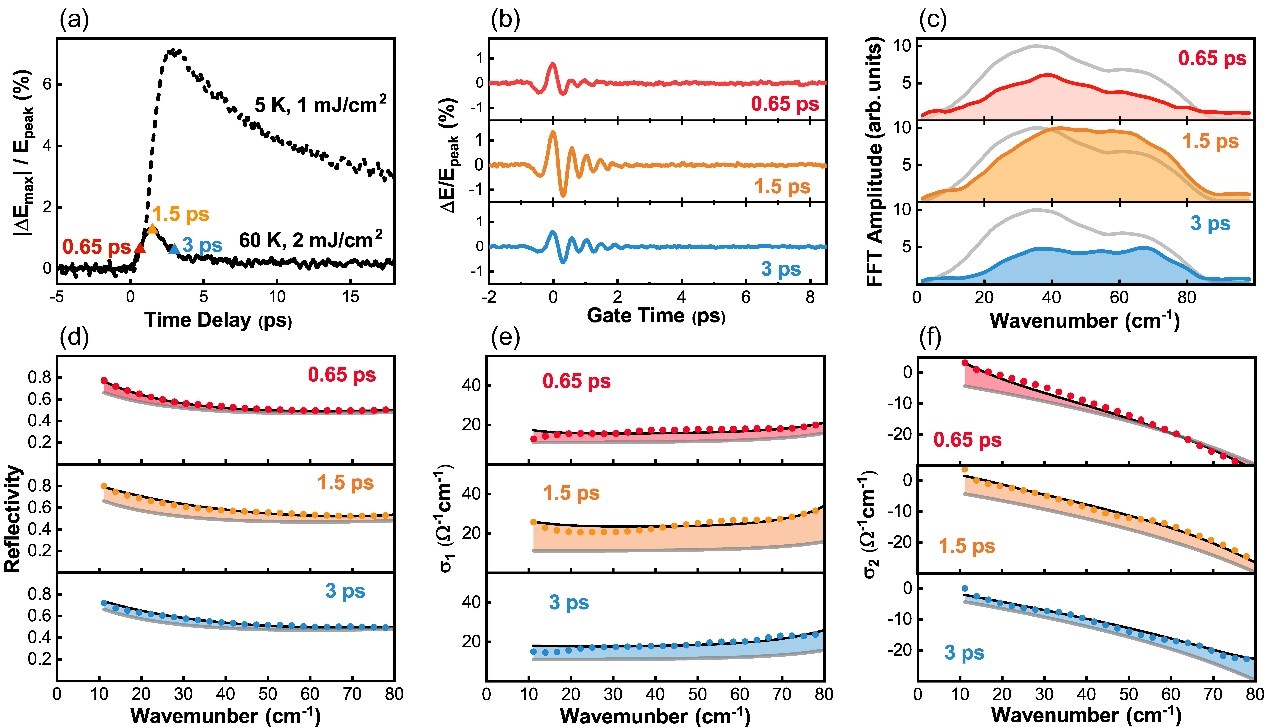Physical Review X reports Nanlin Wang and collaborators’ work on Photoinduced Nonequilibrium Response in Underdoped YBa2Cu3O6+x
The pursuit of higher superconducting transition temperatures is an evergreen frontier in condensed-matter physics. Light-induced superconductivity above room temperature has been in the spotlight since it was first reported; however, there are two critical issues remaining. One is whether the observed optical signatures can be unambiguously identified as evidence for superconductivity. The second is whether phonon resonant excitation is necessary for those signatures. Aiming at addressing those two issues, Nanlin Wang and collaborators recently conducted a comprehensive study of the transient optical responses in underdoped YBa2Cu3O6+x after systematic measurements and analyses.
They measured the light-induced nonequilibrium optical constants along the c axis (perpendicular to the copper-oxygen planes) of underdoped YBa2Cu3O6+x bulk samples in the terahertz regime. All of their results can be explained by suppression of superconductivity and the generation of quasiparticles without invoking light-induced superconductivity. Furthermore, by comparing the results when they tuned the excitation energy near and far away from a specific phonon mode claimed as the key to inducing superconductivity, they observed no substantial difference, which indicated that they can exclude phonon resonant excitation as a scenario for the light-induced phenomenon.
The work shows that simultaneous rises in both real and imaginary parts of conductivity may not be seen as an indication of transient superconductivity. In addition, the phonon resonant excitation scenario can be excluded in YBa2Cu3O6+x. These results shed light on the experimental and theoretical field of the light-induced phenomenon, especially light-induced superconducting behavior.
This work has been published in Phys. Rev. X 10, 011056 (2020). The leading author of the paper is Sijie Zhang, a doctoral student of Nanlin Wang’s group in ICQM. Nanlin Wang is the corresponding author. The single crystal samples were provided by Xin Yao’s group at Shanghai Jiaotong University. This work was supported by the National Natural Science Foundation of China, the National Key Research and Development Project.

Figure: Pump-induced changes after excitation at 1.28 µm by a fluence of 2 mJ/cm2 in normal state. (a) the decay procedure of ΔEmax/Epeak at 60 K is plotted in a solid line. Three representative time delays are labeled in colored triangles. The decay procedure profile at 5 K is plotted in a dashed line for comparison. (b) the pump-induced relative change ΔE(t, τ)/Epeak in time domain at three different time delays. (c) Fourier transformed spectrum of ΔE(t, τ). Grey lines is Fourier transformation of static reflected electric field divided by a coefficient. (d)-(f) transient reflectivity R(ω,τ), real part of conductivity σ1(ω,τ), imaginary part of conductivity σ2(ω,τ), respectively. The colored dots are experimental data and the black lines are fitting curves. Optical constants in static state are plotted in grey lines.